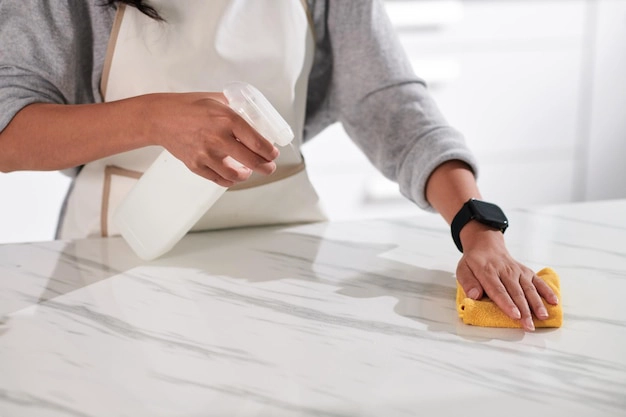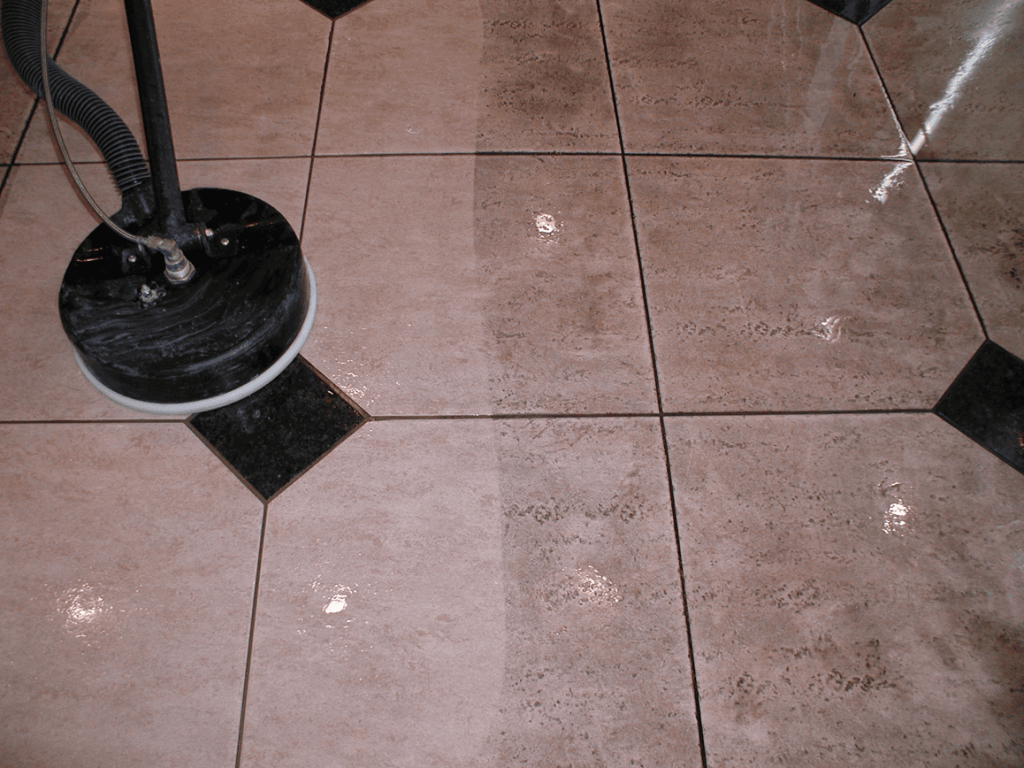
Table of Contents:
Marble polishing refers to the process of restoring the natural sheen and smoothness of marble while removing spots, scratches, and stains. If your marble floor or marble countertops have lost shine or dirt has built up over time, the polishing process can easily restore their appeal.
Here is a comprehensive guide to polishing marble and restoring its entire surface to a pristine look.
Why Polish Marble?
Apart from its appearance, polishing is necessary to maintain the stone’s integrity. Marble surfaces can become dull over time due to exposure to spills, dust, and cleaning chemicals. Polishing compound will help with the following:
- Restore the natural sheen and depth of the marble.
- Remove surface imperfections, such as etching and minor scratches.
- Protect the surface from future stains and wear.
A polished marble surface, such as marble countertops or floors, is much easier to clean and visually appealing. It also helps the surface look brand new for a longer period.
Step-by-Step Guide to Polishing Your Marble Table Top
Usually, polishing marble is a time-consuming process that requires specialized materials and techniques. Follow the steps below closely for polishing table marble to obtain results that closely resemble those of a professional marble table polishing service:
Step 1: Clean the Surface Thoroughly
Before polishing a marble table, it is best to make sure the surface is clean. Dab some pH-neutral cleaner on a soft cloth and use it to clean the surface. Avoid cleaners that have acids in them, such as vinegar and lemon juice. They can damage marble floors. Always use distilled water to prevent mineral accumulation or streaky spots from forming.
For more thorough results, professional marble cleaning Chicago-based services use safe, specialised solutions to lift grime without damaging the surface.
Step 2: Remove Minor Stains

Due to its porous nature, marble is prone to staining. You must first identify the type of stain before trying to treat it.
| Stain Type | Cleaning Materials | Procedure |
| Oil-based stains (cooking oil, grease, cosmetics) | Baking soda + warm water | Apply the paste with a damp cloth and cover with plastic wrap for 24 hours. |
| Organic stains (coffee, wine, food) | Hydrogen peroxide (12%) | Dab with a soft cloth until the stain fades |
| Rust | Commercial rust remover (non-acidic) | Follow the manufacturer’s instructions carefully to use the cleaning solution. |
| Water beads | Dry microfiber cloth | Gently buff in circular motions |
Once the stains have been removed, wipe the surface with a wet cloth to remove any residue that may remain.
Step 3: Sand Light Scratches
Sanding can help if your marble tables have light etching. Use a fine-grit sandpaper or a diamond polishing pad for the purpose.
- Soak the surface with water.
- Gently rub the affected area in a circular motion.
- Progress to finer grits for a smooth finish.
Avoid aggressive sanding. Remember, marble is soft and can wear fast. After gentle sanding, rinse with clean water and remove excess liquid with a dry cloth.
Step 4: Apply Marble Polishing Powder
Marble polishing compound can restore marble shine. It grinds away the surface and fills in the micro scratches.
- Pour a small amount of polish powder on the marble surface.
- Add some water to make a paste.
- Buff the marble surfaces with a soft polishing pad or a lower-speed polishing machine.
Work in small sections at a time to ensure even coverage. Once finished, wipe off excess with a wet cloth and dry thoroughly. Avoid over-polishing, as it can create areas of uneven sheen or slipperiness.
Step 5: Buff the Surface
Buffing marble countertops increases the natural beauty of the stone. You can buff it at home with a microfiber cloth or use a variable-speed buffer with a felt pad.
- Add a few drops of marble polish or polishing compound.
- Buff the surface until it becomes glossy.
- Rinse and wipe off any excess product with a dry cloth.
Buffing after polishing the marble table top gives a glass-like finish by bringing out the depth and veining in the stone.
Step 6: Seal the Marble
Sealing is essential to prevent future stains and save your marble floor or tabletop. Sealers penetrate the pores and leave behind an invisible barrier that acts as a protective layer.
- Select a sealer to achieve long-lasting results.
- Spread the powder evenly using a wet cloth or sponge.
- Wait 15-20 before buffing off the excess residue.
Depending on the usage, it will require resealing every 6-12 months. This will reduce maintenance, as a sealed top repels spills.
Maintenance Tips to Keep Your Marble Shiny
Regular cleaning helps maintain the beauty and durability of your marble floor or tabletop. Here are some measures you can follow to maintain:
- Clean Spills Immediately: A marble table can absorb liquids quickly. So, if you spill water, juice, or wine, promptly wipe it up or use baking soda to prevent water spots.
- Use Coasters: Using coasters helps prevent stains on cups and glasses. This is particularly effective if the beverage contains an acid that can leave stubborn stains.
- Dust Weekly: Use a dry cloth to dust regularly once a week. Dirt and grit are really bad for marble.
- Do Not Use Acidic Substances or Harsh Chemicals: Use only pH-neutral cleaners or hydrogen peroxide to clean the surface regularly.
- Re-polish Annually: Light polishing helps maintain a shiny appearance.
If you like a deep cleaning process, hire professional granite cleaning in Chicago, travertine cleaning in Chicago, or limestone cleaning for multi-stone maintenance.
Common Mistakes to Avoid
Despite the best of intentions, certain cleaning habits can harm your marble. Here is what you should keep in mind when cleaning or polishing marble:
- Acidic Cleaners: Certain cleaning products, like vinegar and citrus cleaners, can make the marble dull and cause etching.
- Not Using the Sealer: Unsealed marble is vulnerable to absorbing moisture.
- Rough Scrubbers: Using steel wool or scouring pads can scratch your marble.
- Cleaning Too Aggressively: Too much pressure when cleaning may leave swirl marks and make the shine uneven. Use a soft polishing pad for removing stains.
- Not Maintaining Regularly: Small spills can become permanent. Clean them immediately to protect the marble.
- Cleaning Surface Start in a Visible Area: Always test the polish paste first in an inconspicuous area rather than high-traffic areas.
Conclusion
Polishing and cleaning marble is easy, and it rewards you with a refinished elegance and brilliance. Thoroughly clean the stained area, sand off any small imperfections with a clean cloth, and finish it with marble sealer. Avoid scratching and follow the manufacturer’s instructions to achieve a flawless, glass-like finish on your marble.
Regular maintenance, along with light cleaning, occasional professional cleaning, and polishing, will keep your marble looking great for years to come. Given the correct approach, marble will retain its beauty and elegance.



